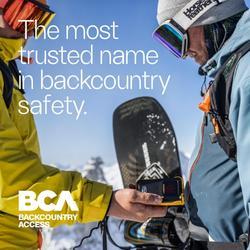Observation Date
4/1/2023
Observer Name
Zimmerman-Wall/Matthews
Region
Salt Lake » Parleys Canyon
Location Name or Route
Parley's Burn
Comments
Two profiles (7600' and 8150' Northerly facing) showed similar structure in the upper snowpack. Photo 1.
The most interesting thing was the dry and coarse grained rounding facets found in the bottom third of the snowpack. Photo 2 shows these 2mm factets. No failure initiation or propogation on this layer which was 120cm down.
We did see a small cornice collapse and resulting small wind windslab avalanche from the previous 24 hour period that had failed in a crossloaded terrain feature. Photo 3 illustrates this failure, and Photo 4 shows the fetch that was highly wind textured. Loading right to left in the image.
By the end of the tour at 1300 hrs visible loose wet avalnaches on steep East facing slopes of Mt. Aire could be seen, both natural and human triggered. Image 5.
Throughout the day, SW winds remained elevated along the highest peaks in the area and there was a near constant plume of snow blowing off of Grandview peak to our north. Image 6.
Overall this terrain is still holding HS up to 250cm in some favored locations. It is becoming more popular and many individuals and other groups were noted in the area. No signs of rider triggered slab avalanches in the terrain observed.
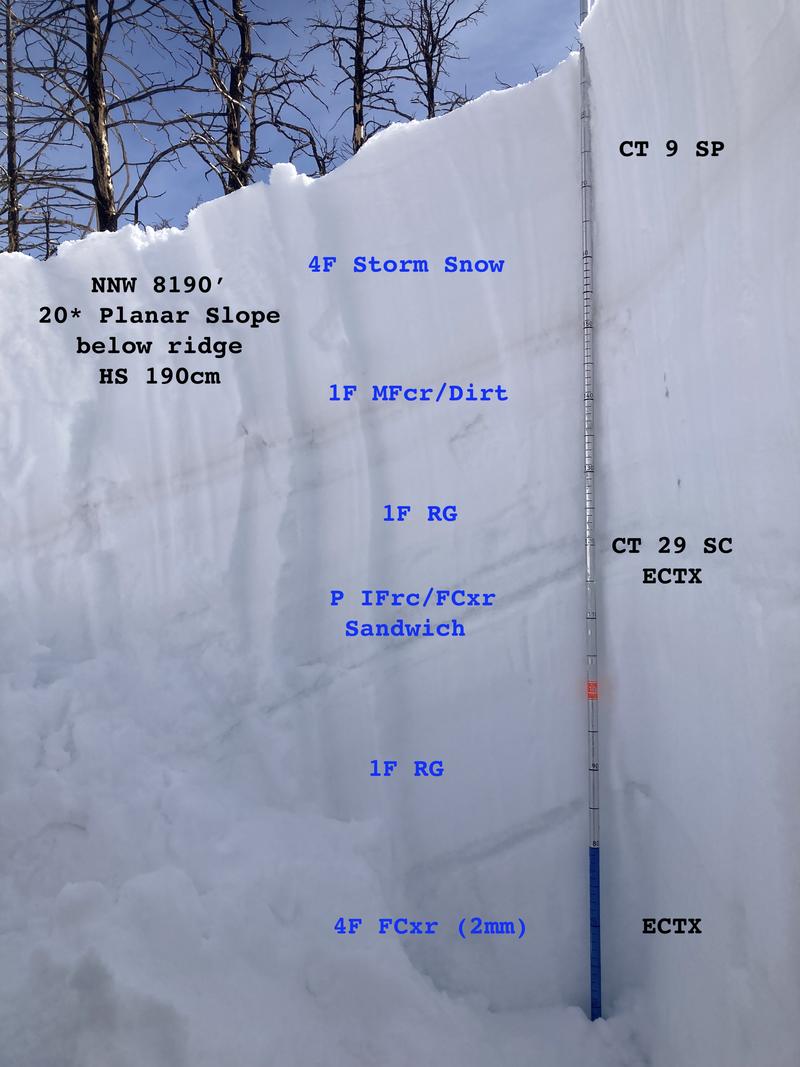
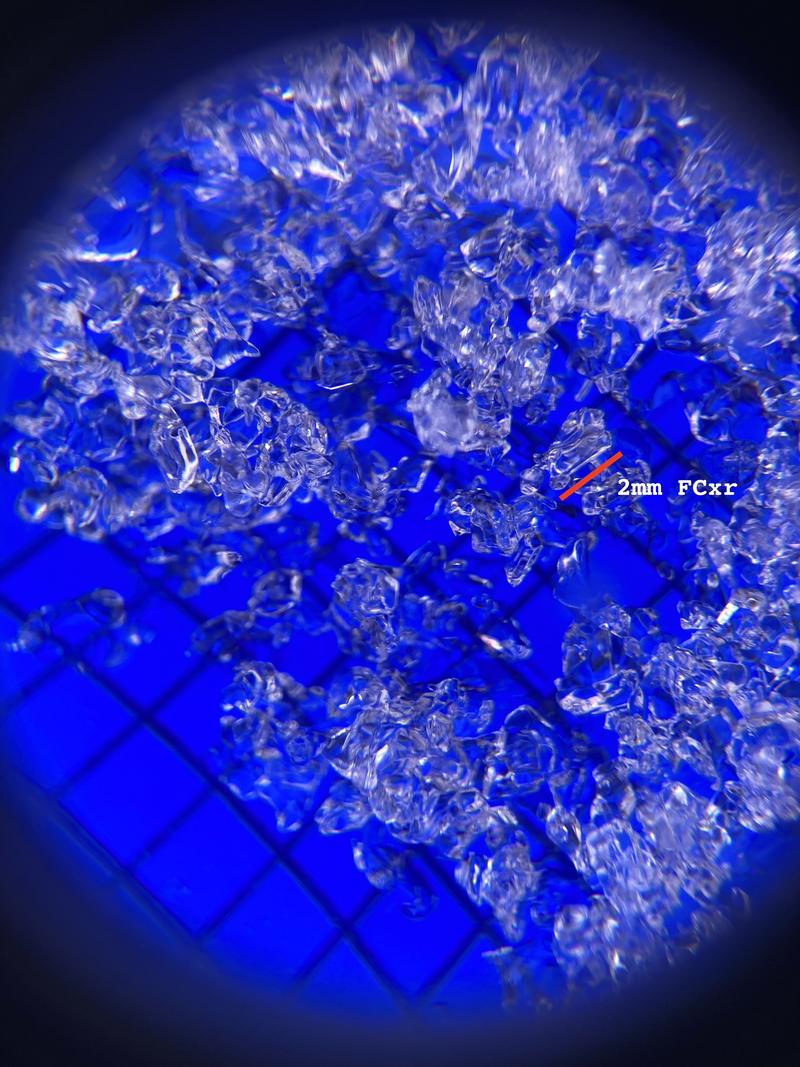
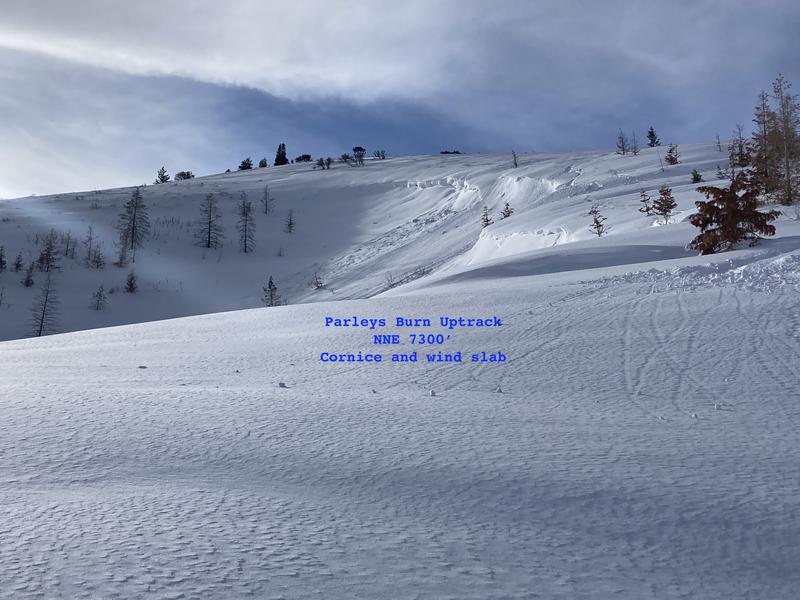
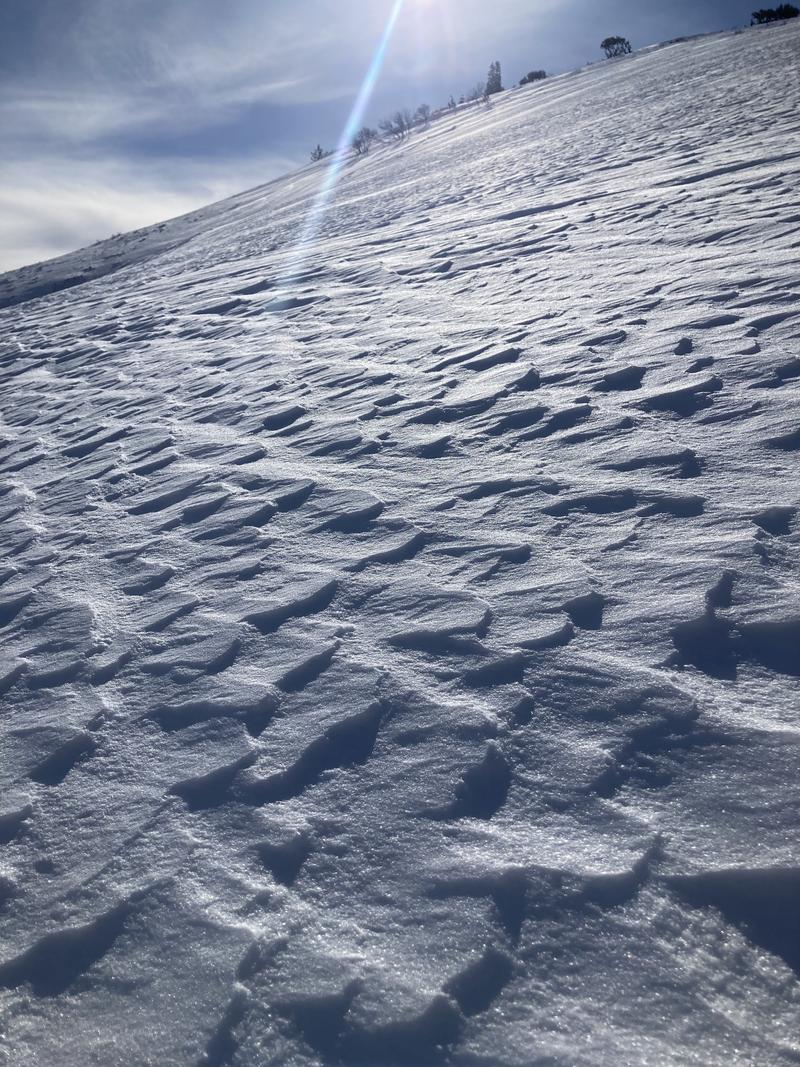
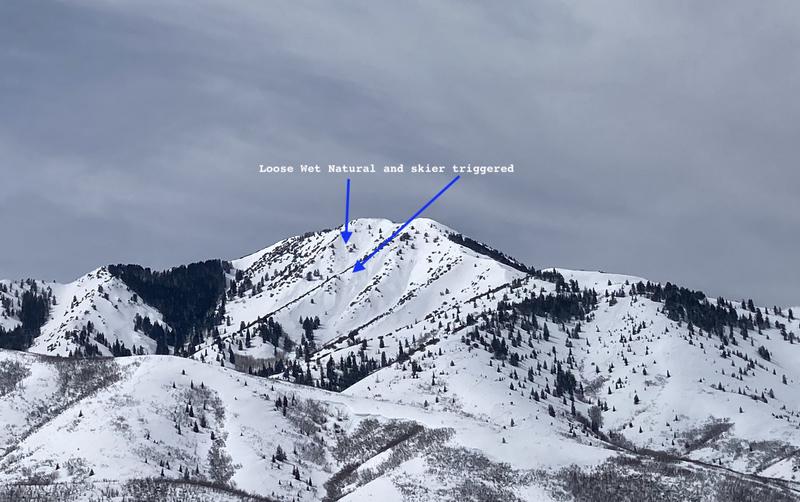
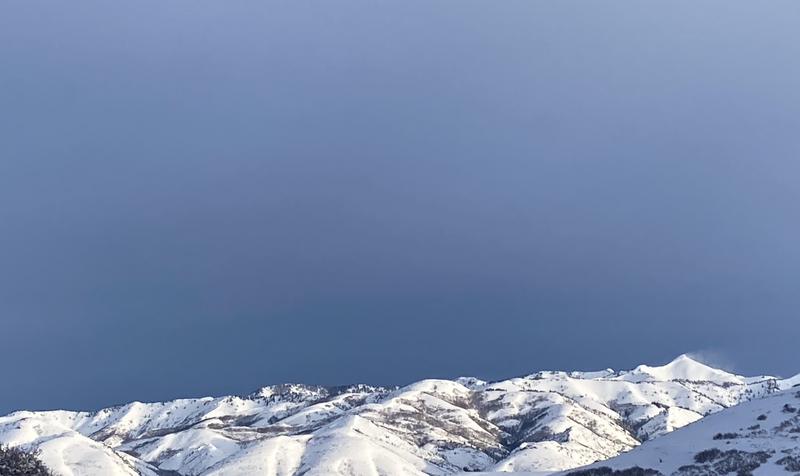
Today's Observed Danger Rating
Moderate
Tomorrows Estimated Danger Rating
None
Coordinates



